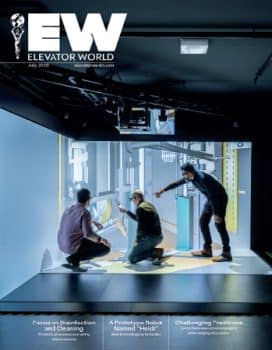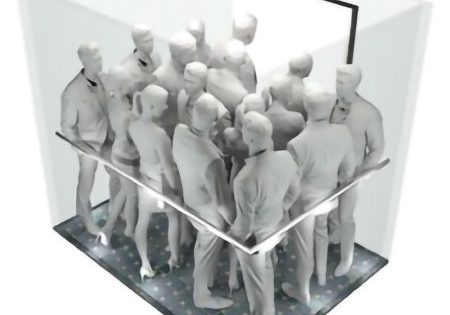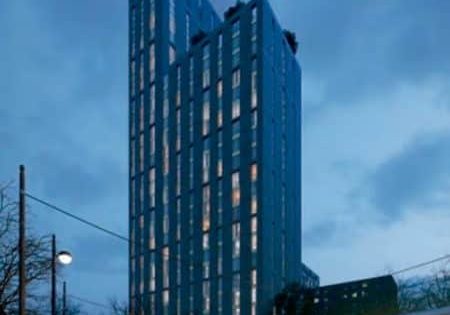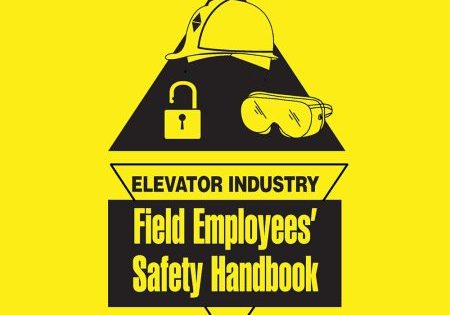If we’ve learned anything in this issue of ELEVATOR WORLD, it’s that the coronavirus, the nasty little microbe responsible for the global COVID-19 pandemic, is changing the way society thinks about elevators. True, these small boxes on ropes have always been a place where strangers come into close contact, but that was OK, because we all have somewhere to be, and it’s not so bad to share close quarters for a brief ride. It’s when we toss in a potentially fatal germ that a box filled with strangers suddently becomes the last place any of us wants to be. A May posting on CityLab.com put it succinctly:
“Of the many stressful spaces in a coronavirus-stricken city, elevators are among the most fraught. All but the fanciest require touching germy surfaces to operate and present the risk of other people squeezing in at any time. Even empty cars can harbor COVID-19 pathogens: a recent model of a hypothetical elevator ride showed that viral droplets can linger in the air well after an infected person exits.”
Our industry is rising to the occasion, however. We are seeing new technologies that allow riders to call elevators without ever touching a push button. We’re limiting the number of riders, and you can bet there’s a lot of traffic analysis going on to compute the best, most-efficient and safest ways to move people up and down. Perhaps most importantly, engineers and entrepreneurs are devising systems and materials to sanitize escalator handrails and elevator interiors — in some cases, even the air inside the cab — to bolster the confidence of the riding public.
As of this writing, none of us knows when the pandemic will truly end, and many of us remain hunkered down in our homes, binge-watching shows and movies. Looking for something good to watch? As the CityLab piece points out, it’s “no surprise that the first coronavirus-themed horror movie is set in an elevator.”
Get more of Elevator World. Sign up for our free e-newsletter.








